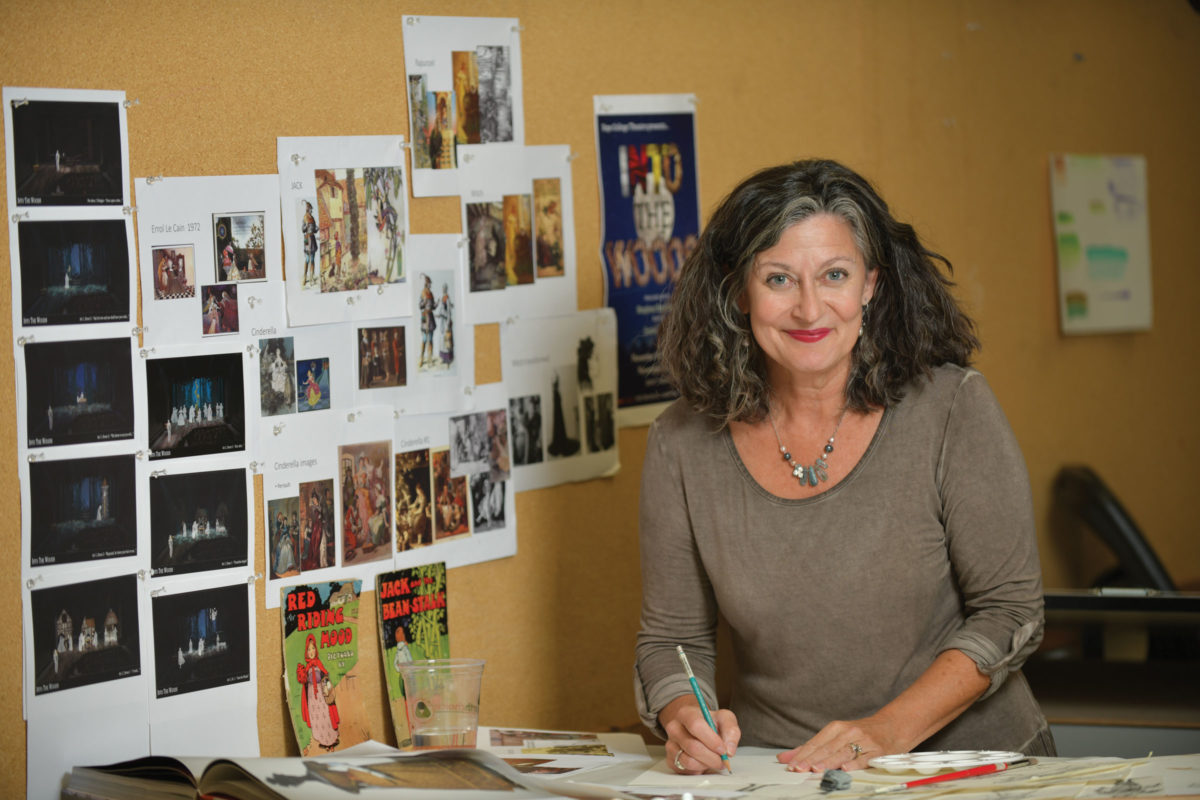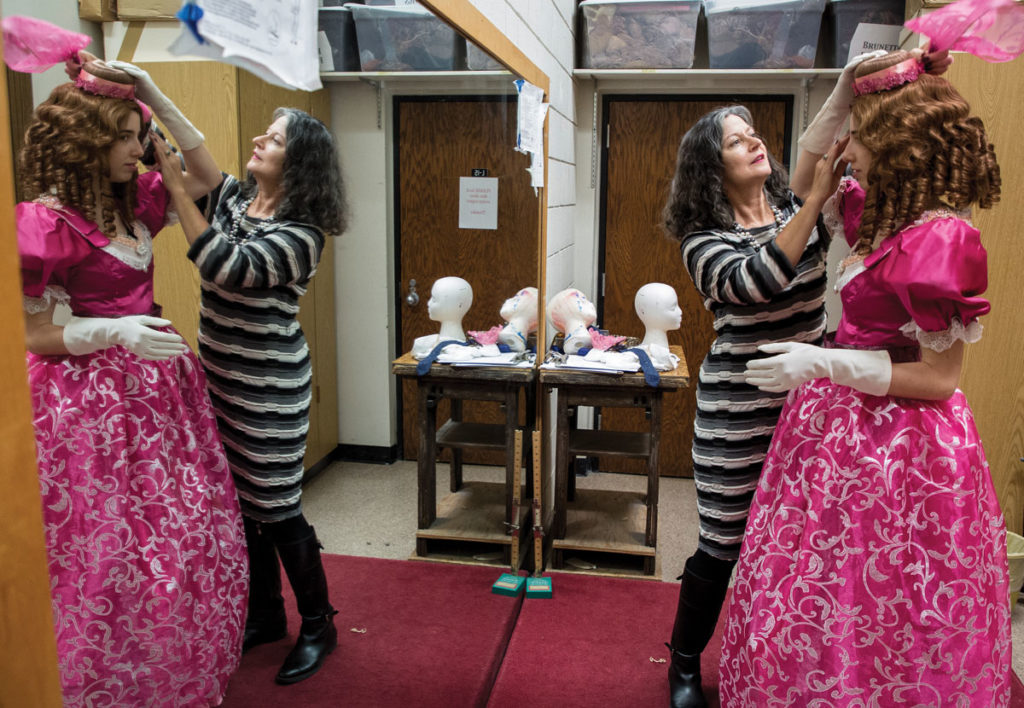Human Form and Function in Costume Design
Michelle Bombe, MFA | Professor of Theatre
The silken bodice of Cinderella’s gown, the furry makeup on the Big Bad Wolf’s face, the crimson woolen cape over Little Red Riding Hood’s shoulders — each element helps bring to life Stephen Sondheim’s amalgamated fairy tale Into the Woods. Professor Michelle Bombe and two student assistants designed every character’s costume from head to toe for Hope’s 2018 production of the musical. In doing so, she accounted not only for the story’s historical and literary context but also for each actor’s body type and how that actor would need to move on stage.
To Bombe, muscle and bone and sinew, under frills and fur and frock, tell a play’s story as much as the script and scenery. It’s been that way for more than 200 productions for which she has designed costumes during her 28 years at Hope.
“Costume design is creating moving sculpture,” says Bombe, who is the college’s resident costume designer and oversees theater productions. “I’m not only concerned about what an actor wears but also how an actor wears it. I’m very interested in looking at different body types and determining how a design can affect what the audience may think about a character.”
Her first steps are to study the play’s text and delve into what clothing was like in the period in which the play is set. “I love working with especially incredible playwrights like Shakespeare who have really rich descriptions of who these people are, what they think, what their bodies are like, what their characteristics are like,” she says.
For Into the Woods, she started with the original illustrations of Grimms’ fairy tales and moved to some modern artists for inspiration. She does this kind of reconnaissance for every production she designs. “There’s always some kind of record of what people looked like,” reasons Bombe, whose academic specialty is the history of costume design. “Artists have always drawn the human body and the way that we adorn it. It’s fascinating to delve into that history.” She based the costumes for each fairy tale’s group of characters on a different historical period, after assessing which era’s clothing best fit each story.
Bombe also scrutinizes the posture and poses that inspirational art portrays. The way people carried themselves or used body language during a certain time period determines how she designs a costume for the modern stage. This “human movement of the era,” as she calls it, was often dictated by undergarments. If a period costume will include a corset, for example, she knows it will change the way an actor can move, gesture or turn.
Historical human kinetics quite likely never enters the minds of audience members accustomed to wearing comfortable, comforting clothing.
“In the 1600s, 1700s, even the way women sat was different in those garments,” Bombe says. “Our young women today don’t have as much practice.” She and the director coach actors about how to sit, stand, and go up and down steps in costume.
It takes Bombe about three months to design the costumes for a Hope production. Following her research, she sketches ideas and collaborates with the scenic designer, lighting designer and director to arrive at a cohesive creative plan. She paints renderings of her vision for each costume and decides which costumes should be built from scratch and what items can be pulled from stock and dyed or remade to fit the designs.
Costume shop manager Darlene Veenstra and the student staff make patterns and construct costumes while rehearsals are underway. Each actor visits the costume shop in the DeWitt Cultural Center about three times for fittings. “I’ll look at my renderings and then see how a costume looks on the body, and make new adjustments as needed,” Bombe explains. “Maybe we need to drop a hemline about two inches or put a waist seam in at a different place. Making all those changes can only happen when you can put the body with a costume.”
Of course, Bombe — who is also the national vice chair of the Kennedy Center American College Theater Festival — passes these important design considerations on to her students, not only in the costume shop or on stage but also in the Costume Design class she teaches every other year. While design elements of color, line, shape, texture and silhouette are addressed, so too are the skills it takes to artistically create full-length human renderings. For a month at the start of the semester, in studio sessions with a human model, all Costume Design students first learn to draw the body.
“Then we start putting clothes on those drawings like you would with a paper doll,” Bombe says. “They have to learn from the inside out so that they can understand how to draw the clothing. They first, though, have to understand the form of the body.”
















